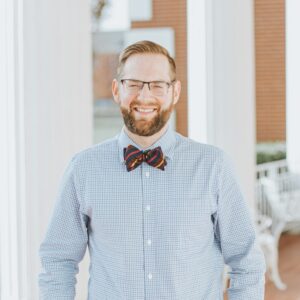
Creaturely Pedagogy Part 3: Departures and Returns
Humans, like all living things, are creatures of habit. The familiarity of my classroom spaces, whether indoor or outdoor, is profoundly comforting to me. The established structures and routines – the layout and furniture of the room (or patio), where everyone sits, the specific times we keep for prayer, discussion, board work, and listening all come together – a spatiotemporal synergy – to create an atmosphere of healthy safety that makes the gentle provocations and challenges needed for learning, growth, and even transformation possible. We can address ideas and issues in the unique space and time we have together because of its set-apart particularity. And stability, predictability, and repetition are integral ingredients for the very possibility of such work.
When I take students outside for Creaturely Theology, though, such routines and structures are out the window, literally. The changes and challenges of the seasons demand adaptability. We must be ever ready with open minds, hearts, and even hands to receive whatever is offered, moment by moment.
There are certainly rhythms and regularities. Throughout the semester we return to the same places again and again, often via the same trails and routes. Every time we arrive again to where we have been before, things are new. The cold browns and grays of January and February give way to rich, vibrant greens, and then whites, yellows, pinks, oranges, and blues, as herbaceous plants awaken and show off beautiful ephemeral blooms in March and April. In the cool, wet winter, we regularly encounter salamanders, small mammals, and ground-dwelling invertebrates, but as the world warms, the diversity of lives multiplies before our eyes. Flying insects appear seemingly from nowhere, and snakes, lizards, and turtles emerge from the subterranean slumber of brumation into the lengthening brightness and warmth.
Chorus frogs and spring peepers announce the inevitable coming warmth before we can feel or believe it. Overwintering birds depart and spring migrants arrive, transforming the diurnal soundscape, filling each holler and hilltop with new harmonies. Even aromas shift dramatically. The moldering, earthy wetness of winter gives way to the spice and sweet sap of buds unfurling and swelling into leaves and verdant new shoots greedily pressing through previous years’ detritus, pushing aside soil and rock, to meet the sun. Later in the semester, petrichor – the scent of warm rains on drying soil – lifts our spirits, even when our hair and clothes are dampened.
Every change and happening has its particular power for those with eyes to see and ears to hear, but sometimes the experiences are more personal. Some scents and sights have almost bowled me over, returning me to the sensations of my undergraduate self – now twenty years past – in this same but different place.
In my last blog I mused on the importance of recognizing and learning the names of our living non-human neighbors whose ancestors have dwelt here for countless generations. It is, of course, impossible for my students and I to know, and to draw near to, all of them in just one semester. In Braiding Sweetgrass, Potawatomi botanist Robin Wall Kimmerer stresses the desperate need for indigeneity in our age of globalized placelessness.[i] We must shed our restless destructiveness to become grounded again. The health of our environs, their non-human inhabitants, and our own well-being, both physical and psychological, depends upon such attention and connection. It cannot happen completely while obtaining a Bachelor’s degree, let alone during a semester, but I can help plant its seeds, and tend its early growth, with each new cohort of creaturely theologians.
The seasons and lives of this place are constantly reshaping the typical rhythms of academia and my own teaching life. I no longer feel as if I am passing through these woods and fields in unassailable ignorance, taking from them what I can. However slowly, I am becoming naturalized. The more I learn, the more palpably I know my ignorance and limitations; and yet, paradoxically, the more I feel at home. As this place and its inhabitants remake, and renew, me, I am better able to share such intimate care with my students.
As one student put it at the end of the semester, “We kept coming back and getting to know the area. . . [I]n a way it became ‘our campus,’ not in the sense of ownership, but in the sense of friendship.”
Notes & Bibliography
[i] See Robin Wall Kimmerer, Braiding Sweetgrass: Indigenous Wisdom, Scientific Knowledge, and the Teachings of Plants (Minneapolis, MN: Milkweed Editions, 2013), 205–15.
Leave a Reply